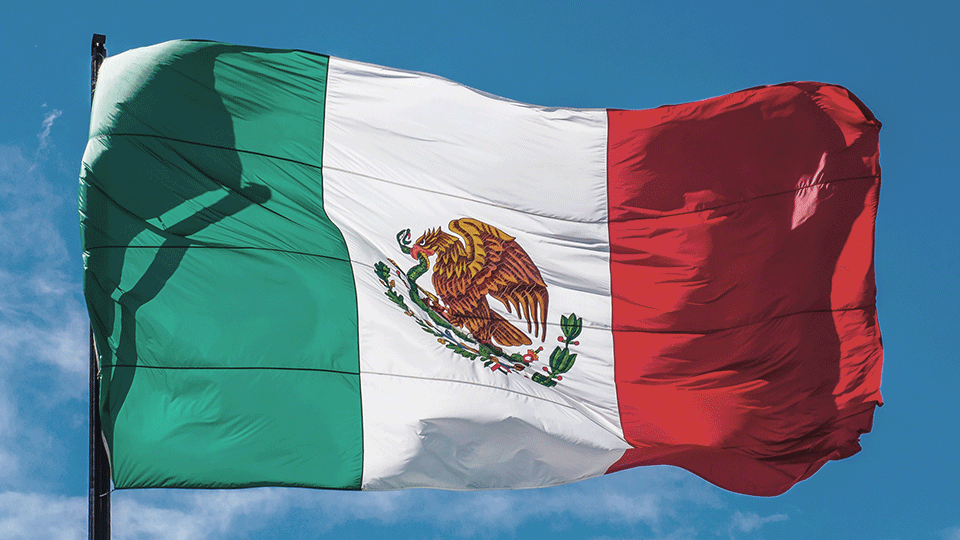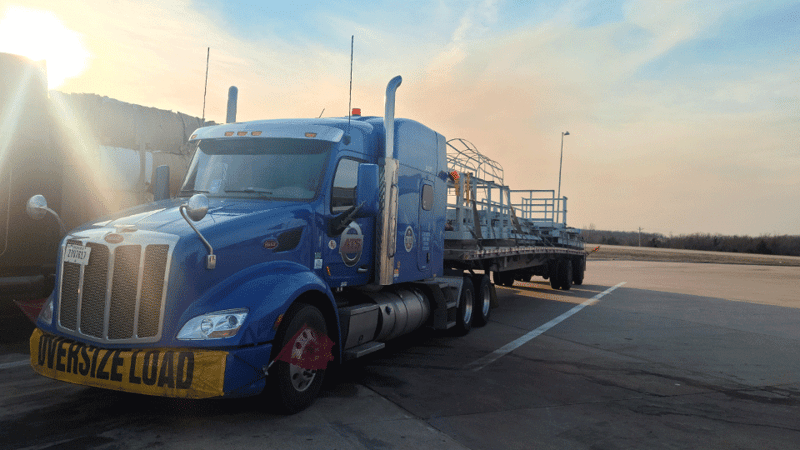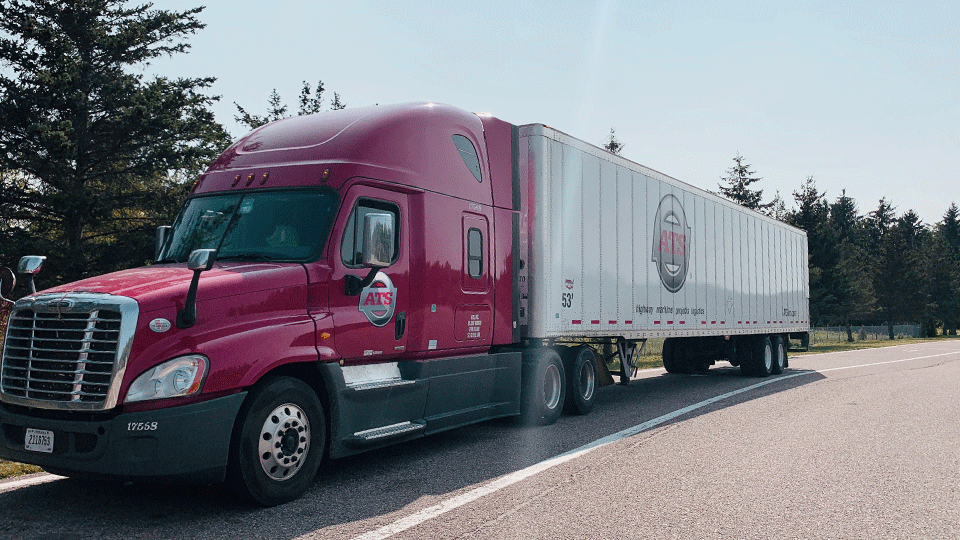 The fact that you’re shipping freight internationally should never come back to haunt you. Just like a domestic shipment, your international freight has deadlines to meet and you have a budget to stick to.
The fact that you’re shipping freight internationally should never come back to haunt you. Just like a domestic shipment, your international freight has deadlines to meet and you have a budget to stick to.
More often than not, though, getting your freight across the U.S.-Mexico border challenges these goals in unexpected ways. Whether it’s paperwork improperly filed, a transportation solution that fell through or a delay getting through customs, cross-border shipping can make it difficult for many shippers to exercise their duties.
Instead of happy customers and a well-oiled supply chain, some companies with freight to move across the U.S.’ southern border watch their relationships waiver and transportation spending rise due to the intricacy of this process.
And, without understanding how customs clearance is done or how long it will take, strategizing for this process will be challenging — at the very least.
Here at Anderson Trucking Service (ATS), our experience moving cargo from the United States to Mexico, and back again, has given us a first-hand view of how unforgiving this process can be for under-prepared shippers.
However, by budgeting their time, planning ahead, communicating with each provider in advance and understanding what to expect when it’s time to cross the border, shippers can avoid potential mishaps.
You can avoid these potential mishaps.
In this article, we’ll outline:
- The customs clearance process when shipping to/from Mexico.
- The documents you’ll need to file when moving freight to/from Mexico.
- How long you should expect the customs-clearance process to take.
- Two ways to make your cross-border journey go smoothly.
This information will help you steer clear of potential cross-border shipping issues going forward and ground your expectations on how long this process should take.
How is Customs Clearance Done When Shipping To/From Mexico?
Assuming that you’ve already arranged for the transportation of your load by selecting a provider (freight brokerage or asset carrier) in its country of origin, as well as a seasoned customs broker, customs clearance should be a straightforward three-step process.
Although your experience will vary based on the established infrastructure and relationships of your transportation provider, here’s how you can expect your customs clearance process to progress:
Step One: Freight Arrives at Your Provider’s Trailer Yard/Terminal

After a shipment is properly loaded and secured at your origin location, its first stop will be at your transportation company’s (or their partner’s) cross-border trailer yard.
Upon arrival — the exact timing of which will depend on your proximity to the border — the trailer hauling your load will be thoroughly inspected.
This inspection, which includes checking things like trailer lights, tire pressure, mud flaps, and braking systems, is administered to ensure everything is in safe, working order before your freight continues its journey.
After your trailer has passed inspection and approval has been given for its continued use, the driver hauling it will be given iits interchange report before heading toward the border.
This trailer interchange report instructs customs brokers as to which Mexican carrier will be responsible for your trailer on the Mexican side of the border and outlines all of their information.
With this and some other necessary documents in hand, your trucking company’s driver will exit their terminal and head toward your pre-arranged customs broker’s facility.
Step Two: Freight Arrives at Your Customs Broker’s Facility
The next stop-off point in your freight’s journey over the border will happen at your customs broker’s facility. Here, the driver that picked up your load originally will give your broker the interchange report as well as copies of four additional documents:
1. Bill of Lading
Your bill of lading (BOL) acts as a contract of services, outlining the specifics of your shipment and should be signed by each party involved in its transport.
Related: What is a Bill of Lading (BOL) In Freight Shipping?
2. Commercial Invoice
Your commercial invoice is, essentially, a preliminary bill of sale. Issued by the seller of the product and sent to the buyer, a commercial invoice should outline: commodity information and description, commodity value, shipper information and consignee information.
3. Packing List
When cross-border shipping to Mexico, a packing list serves to outline, in detail, the exact nature of the freight in transport, where it's being shipped to and the quantity/dimensions of each item.
4. Certificate of Origin
A certificate of origin (CO), is used by customs officials to verify that the goods in transit were wholly obtained, produced, manufactured and/or processed in one country or another. This document is required under the United States-Mexico-Canada-Agreement.
Once these, and all necessary documents change hands, your trailer will be dropped off by its original carrier and left at your customs broker’s facility.
In their possession, all of your cargo will be checked and classified with quantities counted and verified by customs broker employees.
After completing their checks, your customs broker will keep the clearance process moving by requesting import duties (import taxes) from the party responsible for paying them — typically this is charged to the party importing the goods.
Following payment of all necessary fees and taxes — and the presentation of crossing documents by your customs broker of choice — your freight will be moved to the border for crossing.
Step Three: Freight Is Sent to The Border for Crossing
In most cases, crossing the U.S.-Mexico border will require a Documento de Operacion para Despacho Aduanero (DODA) or “Operations Document for Customs Clearance.”
The DODA — which is intended to expedite the cross-border transportation process — should be electronically filed and submitted prior to the time your freight reaches the border.
 Once this happens and all necessary documents are approved, your freight will be cleared to cross the border (with the assistance of a crossing driver) and transported to a nearby facility to be received by the Mexican driver charged with hauling it.
Once this happens and all necessary documents are approved, your freight will be cleared to cross the border (with the assistance of a crossing driver) and transported to a nearby facility to be received by the Mexican driver charged with hauling it.
Related: How to Ship Freight To and From Mexico by Truck?
How Long Will Customs Clearance Take When Shipping to Mexico?
All in all, once your shipment arrives at custom broker’s facilities, it should take between 48 and 72 hours for it to successfully navigate customs. This time will be spent doing all necessary equipment and freight checks, processing the proper paperwork and receiving payment for duties, taxes and fees.
Although it’s rare for a shipment to pass through customs quicker, with the right amount of planning, expediting this process is possible.
2 Ways to Make Your Process as Smooth as Possible
Make your customs clearance experience as smooth, and as fast, as possible by:
- Utilizing competent transportation providers.
- Pre-submitting documentation and paperwork.
1. Utilize Experienced Transportation Providers
Moving freight internationally can be a delicate process. Riddled with intricacies in the form of rules and regulations — of which every country has many — getting this process right will take a steady, experienced hand.
That said, sometimes shippers don’t do their due diligence when selecting the providers they utilize for cross-border transportation. In these instances, it’s not uncommon for unreliable, inexperienced providers to fall through or struggle to meet the deadlines they promise.
You’ll want to avoid using these companies for your next U.S.-Mexico shipment.
Ensuring your international transportation network is as sound and competent as possible starts well before your freight picks up. Make sure to thoroughly vet every potential provider (transportation carriers and customs brokers alike) by asking them the right questions.
Question your carrier’s processes, competencies, history and partnerships by asking things like:
- What cross-border infrastructure do you have in place?
- Terminals, facilities, trailer yards, warehouses
- How long have you been helping companies move their goods over the border?
- How many Mexico-based carriers do you have interchange agreements with? What are their names and respective histories?
- What steps will your company take to ensure that my timelines are upheld?
Vett your customs broker using questions like:
- How long have you been a licensed customs broker?
- How often do you move loads over the border?
- What can I do to make sure my shipment goes as smooth as possible?
The way potential providers answer these, and questions like these, should give you a good idea of how well they fit your business’s needs.
2. Pre-Submit Documentation and Paperwork
Some of the most common hang-ups we see companies run into when moving international freight are the long delays that accompany document and paperwork processing.
Before a load can clear customs, all of its necessary paperwork must be filed and processed by customs officials. That said, this process takes time — even with the continued adoption of digital systems and technologies.
Luckily, avoiding these unnecessary delays is possible.

Start this process as soon as you can. Once your trailer is loaded at its origin location, send your customs broker the commercial invoice, packing list and certificate of origin.
Doing so will kick-start your shipment, helping to keep freight moving once it reaches your customs broker’s terminal. When handled and filed properly, sending your documents ahead of your load can help you cut down wait times and expedite your customs clearance process.
Related Content: Cargo Coverage in the U.S. Vs. Mexico: Key Differences and Important Takeaways
What Else Should You Know About Shipping To/From Mexico?
Now that you have an understanding of the customs clearance process, including how long your should expect it to take and what you can do to ensure successful transit, let’s round out your knowledge on shipping to Mexico.
Clearing customs isn’t the only thing you have to worry about when managing your cross-border shipment. In fact, there’s alot of terminology and nuances related to these shipments that we didn’t discuss above.
For this reason, it’s important that you read our article on Shipping Freight To and From Mexico By Truck where we outline the most essential pieces of moving freight to Mexico.
Here at ATS, we’re very confident in our ability to help you move your cargo to and from Mexico safely and reliably. For decades we’ve been establishing partnerships with the best Mexican carriers and transportation companies in order to give our customers the highest possible service level.
So, if you’re looking for a cross-border shipping partner, a partner that will help you meet your deadlines and maintain your budget, please don’t hesitate to reach out.
We’re always happy to help you in any way you need.





